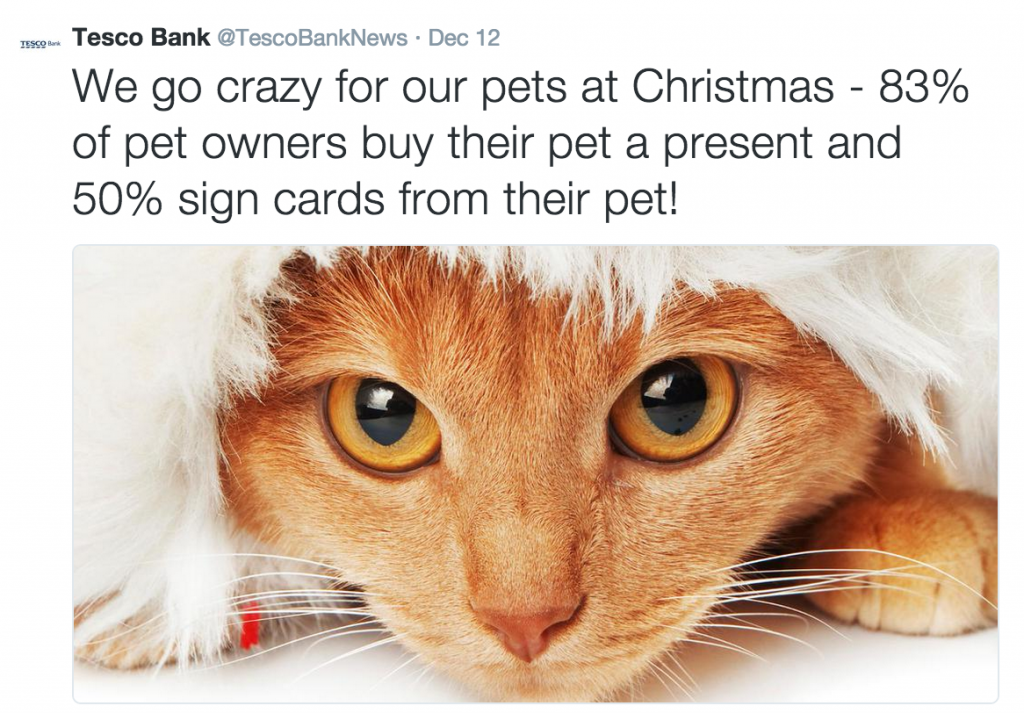February 16, 2015 Marcus Taylor
With over 1/6th of the planet's population connected to social media sites, it's unsurprising that businesses across all sectors are keen use these platforms to engage with potential customers.
Over the past few months, I've been doing a lot of research on how brands in the financial sector have approached this, in preparation for a strategy that I'm currently implementing for a side project we run called BrokerNotes. In this post I'd like to share some of the key tips that have been most useful in guiding us.
When it comes to finance online marketing, a small number of brands, such as TransferWise and Money Supermarket, prove that, when done right, social media can take a leading role in increasing market share in the financial sector. It's not an easy task to do, and many financial brands get it wrong. The following are examples that we can use for inspiration and guidance on what works in the financial sector.
1. Be active, and be human
Any company that doesn't have a dedicated team of people running their Facebook and Twitter account will quickly look outdated and behind the times. They also need to have their finger on the pulse of what's trending, as simply posting self-glorification posts and pictures of their current advertising campaign will turn users off, as will posting every few hours.
The content of the posts will obviously make a marked difference, and Tesco Bank have discovered the value of humour in their posts, and often use memes to attract potential clients to their pages. By sounding and looking like the majority of posts and comments that their users see, their presence is welcomed rather rejected. They get a lot of positive responses, likes and shares which in turn boosts their presence on social media platforms.

2. Personal Responses
A person who is well versed in the ways of social media is worth their weight in gold. Hiring someone who can be given the time to respond personally to as many queries, comments and complaints as possible is a great way to show that a company values each and every customer.
Social media, in particular Twitter, is the perfect forum for customers to contact financial companies directly, and being able to deal with customers in Twitter speak and under 140 characters is a rare talent. At Go Compare, all website issues are dealt with through Twitter, which doubles as an FAQ board for other people to reference, and their customer feedback to this approach has been extremely positive.
3. Taking Online Engagement into Real Life
One of the interesting aspects of running a successful social campaign is the crossover from contacting people online and turning them into fans of your brand in real life. One of the best examples of managing and encouraging this transition came from online money service Transfer Wise.
They wanted to highlight their new campaign banning hidden fees from their services and reveal that most high street banks charge for those. On Halloween, they got hundreds of volunteers to line the streets of London with tombstones with their temporary website on it, and got over 1 million Twitter impressions for their troubles. The videos and pictures from the event were then be re-used and re-posted as part of the advertising.

4. Offer (Good) Free Advice
Not every customer who tracks down a company on social media is looking to pay for a service or buy a product. Social media is all about contact and building a positive reputation, and Money Supermarket have come across the idea of giving out free financial advice as a way of enticing people to come to their pages online.
They of course run the risk of providing poor advice, but their articles and posts tend to be basic financial common sense, packaged with modern examples and snappy short paragraphs. However, you can only read the first part of each article unless you like or follow them, which has caused a big boost in their numbers.
5. Use Online Petitions
Engagement is the key word for financial brands on social media, and any platform that can bring people on board with the brand is always going to be popular. The rise of online petition sites such as Change.org and 38 Degrees and their ability to affect change on a national scale has made them a valuable tool for financial brands.
Whilst Money Saving Expert is specifically not for profit, they still run successful social media campaigns using petitions as a way to make a name for themselves as well as actually making a difference. A recent campaign to make pay day loan lenders more accountable and transparent to their customers has resulted in a discussion in parliament and has highlighted the problems with these short term payouts.
6. Active Forum Engagement
The final example of good practice in social media looks at the use of discussion and help forums on the company's own website. These places can act as sound off boards for disgruntled customers, a place for people to ask unique questions and find out further information. Many financial brands offer forums, but then just maintain them as a way for their customers to discuss issues amongst themselves. This inevitably leads to bad mouthing of the company, but not at Confused.com. They have a small dedicated team who maintain an active forum presence, answering questions, directing customers to different threads and webpages as well as giving advice and joining in the general discussions.
The common theme that runs through all of these examples of good practice is the motto that less is more. Most people use social media primarily to share aspects of their personal lives with their friends and family and can become frustrated if their news feed or Twitter stream becomes clogged with messages from financial brands that they're following, regardless of how cute, interesting or relevant the posts are. It's essential for financial companies to pay active attention to the feedback they're receiving about the quantity and content of their social media presence, as a good reputation can be destroyed in the space of a day.

